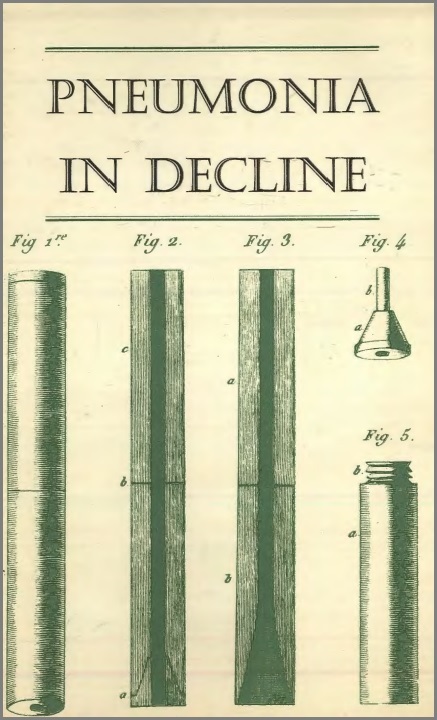Sign up to our newsletter Subscribe
Analysing Global Immunisation Expenditure

Pneumonia is a general term applied to inflammation of the lung whatever the cause. Although it may be a complication of drowning or of being caught in a burning building and inhaling smoke and gases, such cases are rare. Usually, when doctors speak…
Pneumonia is a general term applied to inflammation of the lung whatever the cause. Although it may be a complication of drowning or of being caught in a burning building and inhaling smoke and gases, such cases are rare. Usually, when doctors speak of pneumonia, they refer to two common illnesses, lobar pneumonia and broncho-pneumonia.
Lobar pneumonia is characterized by an acute diffuse and rapidly spreading infection of one or more lobes of the lung. Broncho-pneumonia is characterized by a gradual spread of infection down the windpipe, along the bronchi and in to the lung itself, it is therefore patchy and involves both lungs.
Lobar pneumonia is most commonly due to a single species of organism. Broncho-pneumonia is due to many, several of which may be present at any one time. In lobar pneumonia the bacteria are virulent invaders, often attacking a healthy man. In broncho-pneumonia, they tend to be the normal in habitants of the mouth and throat against which the resistance of the body has fallen so that microbes, formerly harmless, become harmful.
Traditionally, diseases have been described by the effects they produce, as collections of symptoms, and changes in the tissues seen after death. The healthy lung is like a sponge. Normally it contains much air, but in pneumonia it under goes the classic changes of inflammation except that they are seen in an exaggerated form because of the structure of the lung. It becomes red and engorged with blood so that the spaces that should contain air are filled with fluid. The affected area becomes useless making the muscular effort of breathing more strenuous. In a sense, part of the lung is drowned.
The first definite reference to pneumonia in medical literature occurs in the writings of Hippocrates (c.460-370 B.C.). In his definition of ‘peripneumonia’—a term which persisted for two thousand years—were included all acute diseases of the chest accompanied by pain in the side. In the second century, Aretaeus gave a clearer account together with excellent directions for the application of his remedies which remained in vogue until the beginning of this century; copious bleeding from both arms, purging, attenuant and diluent drinks, rubefacients containing mustard applied to the chest, alkaline substances such as soda given in decoction of hyssop, and, when the fever had abated, wine devoid of astringency.
Thomas Sydenham (1624-1689) gave the first clear account of the disease in English. Apparently he thought pleurisy was the same as pneumonia and called it “bastard peripneumonia” affecting “the stout and fat beyond adult life and those who were addicted to spirituous liquors, especially brandy”.
The invention of the stethoscope by Rene Laennec (1781-1826) ultimately placed the concept of pneumonia, pleurisy and other pulmonary diseases on a sound basis. The physician could by percussing the chest, by listening with a stethoscope and by noting the great effort to breathe, state with accuracy how each lung was involved. By taking the patient’s temperature, by counting his pulse and measuring his blood pressure and by listening to his heart, one can judge how much of the ‘pneumonia’ is due to infection and how much to blood pooling in the lungs because of the impaired efficiency of the cardiac pump.
With the great advances in bacteriology and immunology, the clinical descriptions and impressions were augmented by scientific definition. Pneumonias are now classified in terms of the bacteria or viruses that cause them. Not only does this give greater scientific exactness and definition to the disease with a much clearer guide to prognosis, but, even more important it makes possible the selection of the right drug for treatment.
The successful treatment of lobar pneumonia is certainly one of the great triumphs of modern medicine. Bronchopneumonia, with its many different bacteria, is not so readily amenable to treatment with any single anti-bacterial agent unless one is found which is effective against virtually all bacteria. Even so, only part of the illness would respond. The basic ill-health that allowed the broncho-pneumonia to develop would remain. It is perhaps something of an over-simplification to say that we nearly all die from broncho-pneumonia but certainly it occurs as a late complication of most diseases. Indeed, because of its quiet clouding of consciousness and gentle though lethal progress in the terminal stage of diseases such as cancer, it acts in some ways like a narcotic. Rather paradoxically broncho-pneumonia has been called the ‘old man’s friend’ because of the way it causes the patient’s life to draw quietly to its close.
Pneumonia in Decline


